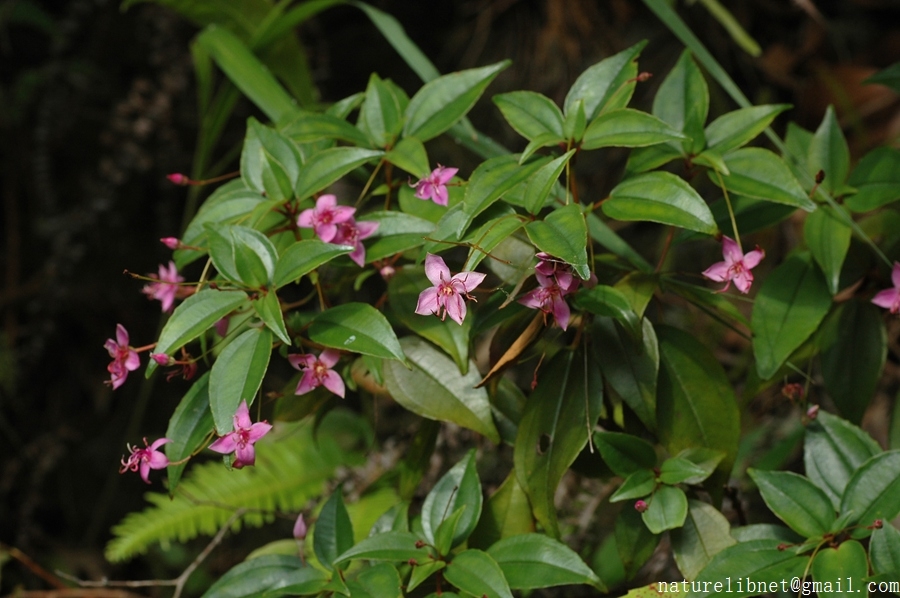- Scientific Name: Bredia quadrangularis Cogniaux
- Ref: Monogr. Phan. 7: 473. 1891.
- Synonyms: Bredia amoena Diels; B. amoena var. eglandulata B. Y. Ding; B. amoena var. serrata H. L. Li; B. amoena var. trimera C. Chen; B. chinensis Merrill; B. pricei F. P. Metcalf
- Chinese Common Name: 过路惊 guòlùjīng
- Family: Melastomataceae
- Genus: Bredia
- Distribution: Open or dense forests, valleys, slopes, stream banks, trailsides; 300-1500 m. Anhui, Fujian, Guangdong, Guangxi, Hunan, Jiangxi, Zhejiang (Taishun).
- Photo: 07/25/2009, Mt.Jinggang, Jiangxi
Shrubs or shrublets, 25-120 cm tall. Stems terete or slightly 4-sided; branchlets 4-sided, ± narrowly winged on ribs, glabrous. Petiole 0.6-1.2(-2.5) mm, puberulous or glabrous; leaf blade ovate to elliptic, (2.5-)4-10 × 1.5-2.5(-5) cm, stiffly papery, both surfaces glabrous, secondary veins 1 or 2 on each side of midvein, base rounded to cuneate, margin remotely serrulate to nearly entire, apex shortly acuminate. Inflorescences terminal at tips of branchlets, cymose, 3-10 × 2-5 cm, 3-9-flowered or sometimes with more flowers. Peduncles, pedicels, and calyces densely puberulous and with glandular trichomes or densely puberulous brownish ferruginous hirsute but sometimes calyces mostly glabrous. Pedicel 3-5 mm. Hypanthium shortly campanulate, (3 or)4-sided, 5-6 mm. Calyx lobes repand, 1-2 mm, apex small apiculate. Petals rose red to purple, ovate to oblong, 5-8 × 3-3.5 mm, slightly oblique, apex acute. Longer (3 or)4 stamens ca. 8.5 mm; anthers lanceolate, ca. 3.5 mm, geniculate; connective decurrent, slightly prolonged. Shorter (3 or)4 stamens 0.7-1.3 cm; anthers 4-6 mm, base tuberculate; connective decurrent, forming a short spur. Ovary half inferior, apex with glandular trichomes, otherwise glabrous, apex 4-lobed. Capsule cup-shaped, ca. 4 × 3.5 mm, (3 or)4-sided, apex truncate; hypanthium 3-4 × 3.5-4 mm, puberulous and glandular or densely puberulous brownish ferruginous hirsute. Fl. Jun-Oct, fr. Aug-Oct.(Flora of China)
